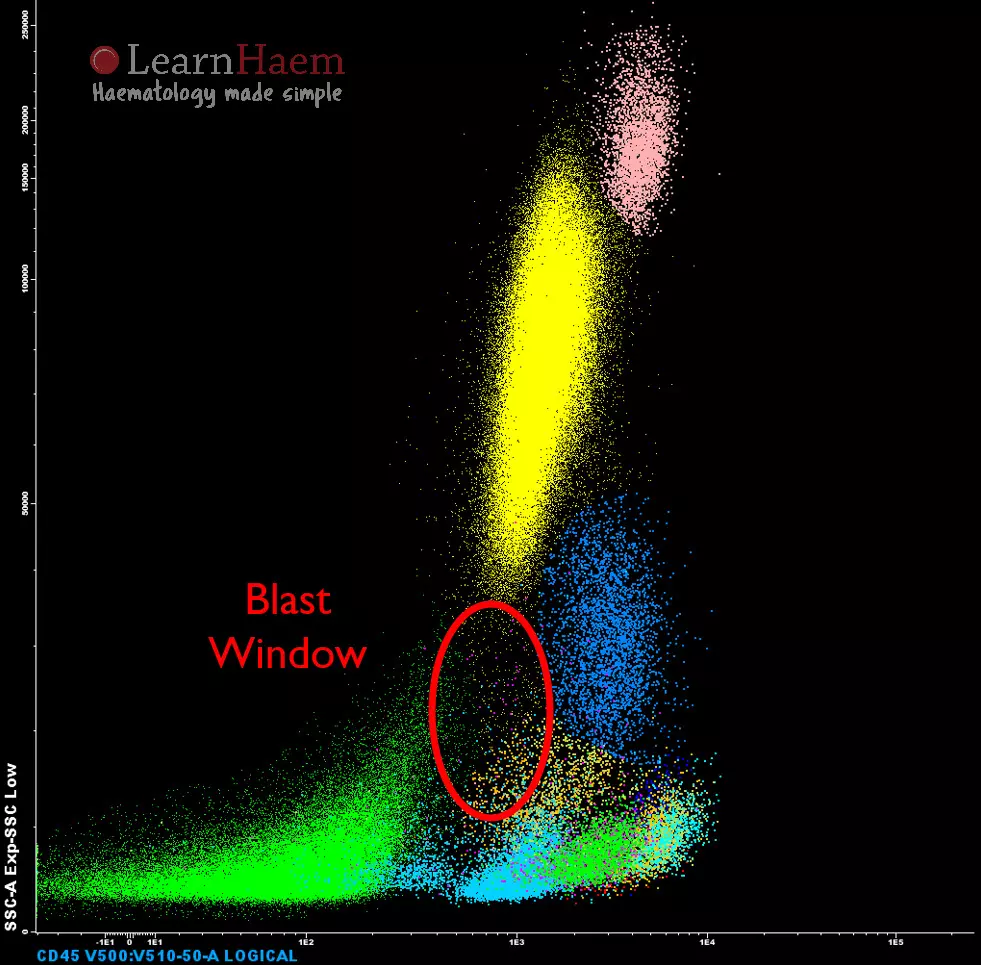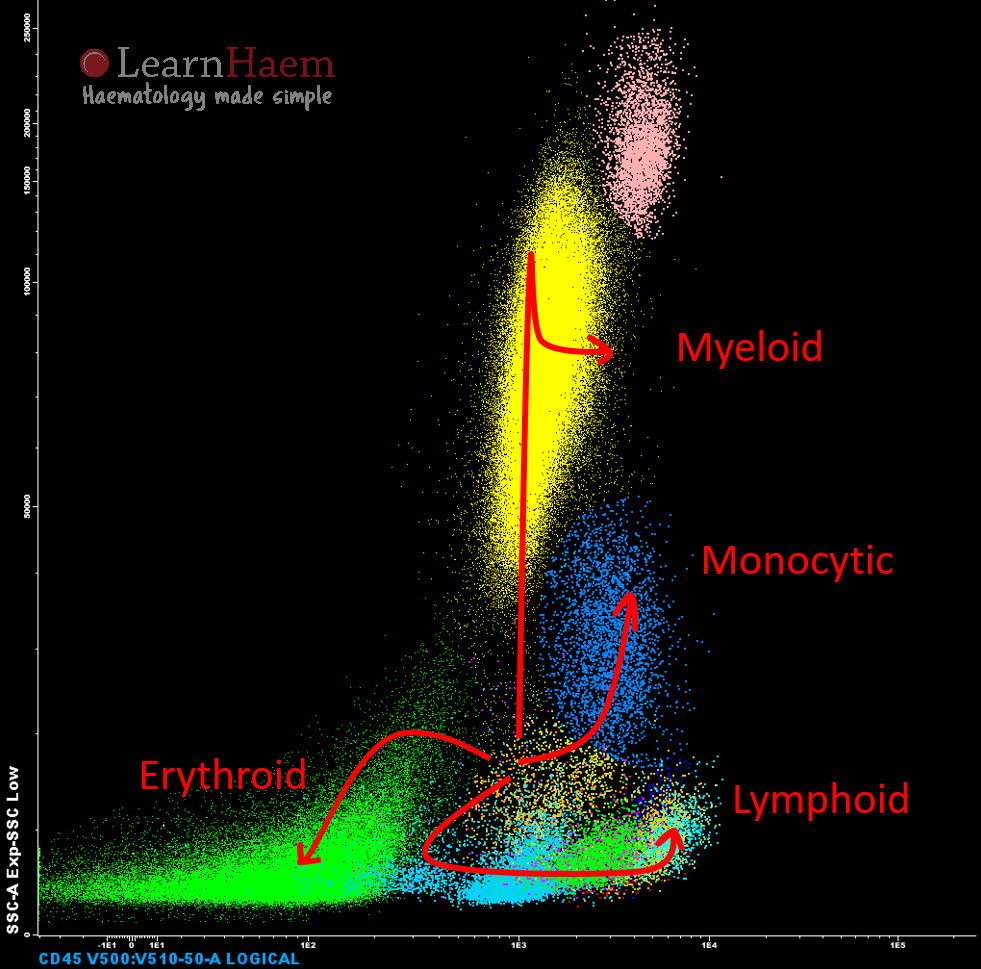The blast window refers to the area on the SSc/CD45 plot which is SSc-dim/CD45-dim. In normal samples, it should be relatively unoccupied.
Differentials for a cell population in the blast window include:
- Leukaemic blasts (both myeloid and lymphoid)
- Lymphoma cells
- Hypogranular promyelocytes (seen in the hypogranular variant of acute promyelocytic leukaemia)
- Plasma cells
- Basophils
- Plasmacytoid dendritic cells

Blast Evolution and Maturation
As common progenitors become committed, their side scatter and CD45 properties change to resemble their mature counterparts. The image below shows how SSc and CD45 change with blast maturation.

Note that blast ennumeration by flow cytometry may not tally with morphological counts. There are a number of reasons for this, including:
- RBC lysing removes variable number of erythroid precursors
- Variable degree of peripheral blood dilution, affecting blast estimate
- Morphological characterisation of blasts may differ from immunotypic characterisation (for example, promonocytes are counted as blasts in morphological assessment, but may be differentiated from monoblasts on flow cytometry).
Immunophenotype of CD34+ Lineage-Committed Blasts
| Lineage | Immunophenotype |
|---|---|
| Neutrophil | SSc high / CD45 dim / 13++ / MPO+ |
| Eosinophil | SSc high / CD45+ / 15+ / cytoplasmic EPO+ |
| Basophil | SSc low / CD45+ / HLA-DR dim / 117 dim / 123++ / 203c+ |
| Monocyte | SSc intermediate / CD45+ / HLA-DR+ / 117 dim / 64+ |
| Erythroid | SSc intermediate / CD45 dim / 36+ / 105+ |
| Mast Cell | SSc intermediate or high / CD45++ / 117++ / HLA-DR dim |
| Plasmacytoid Dendritic Cell | SSc intermediate / CD45 dim / HLA-DR++ / 123++ / 36+ |

Leave A Comment